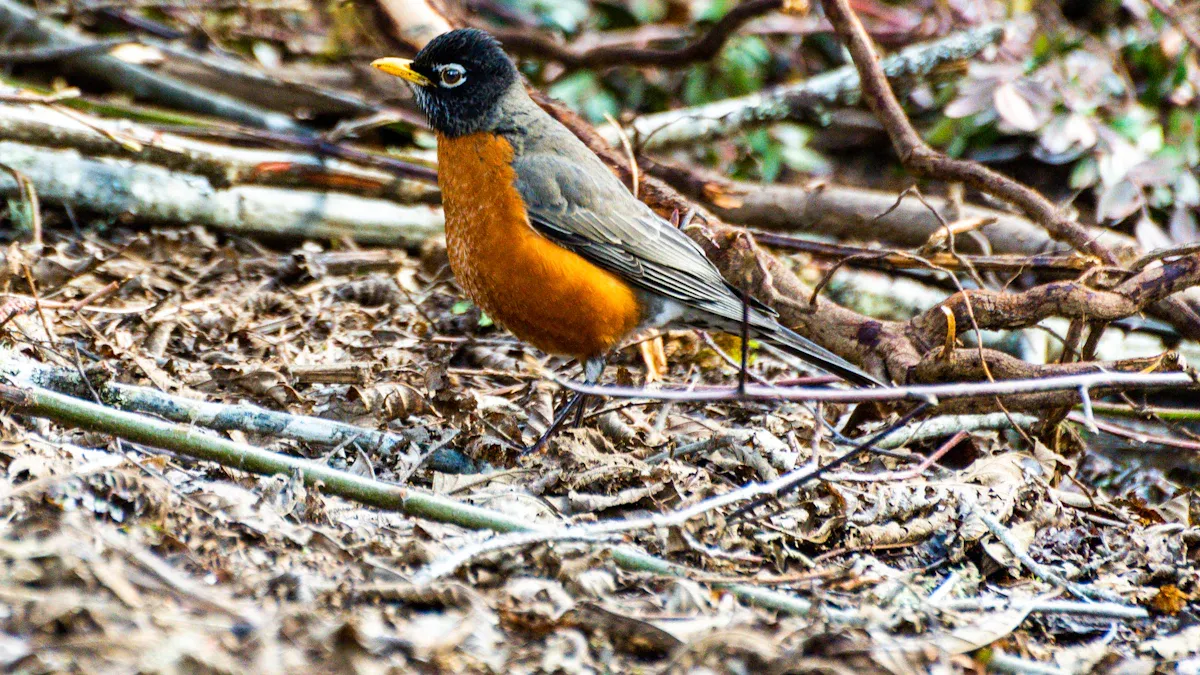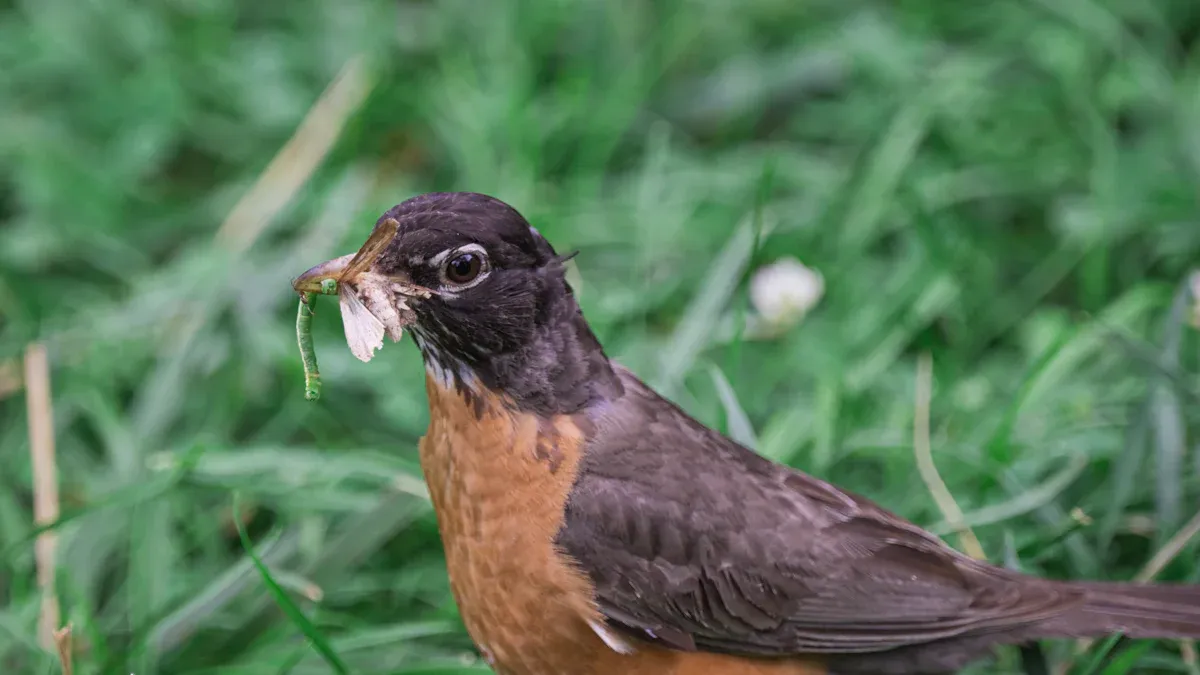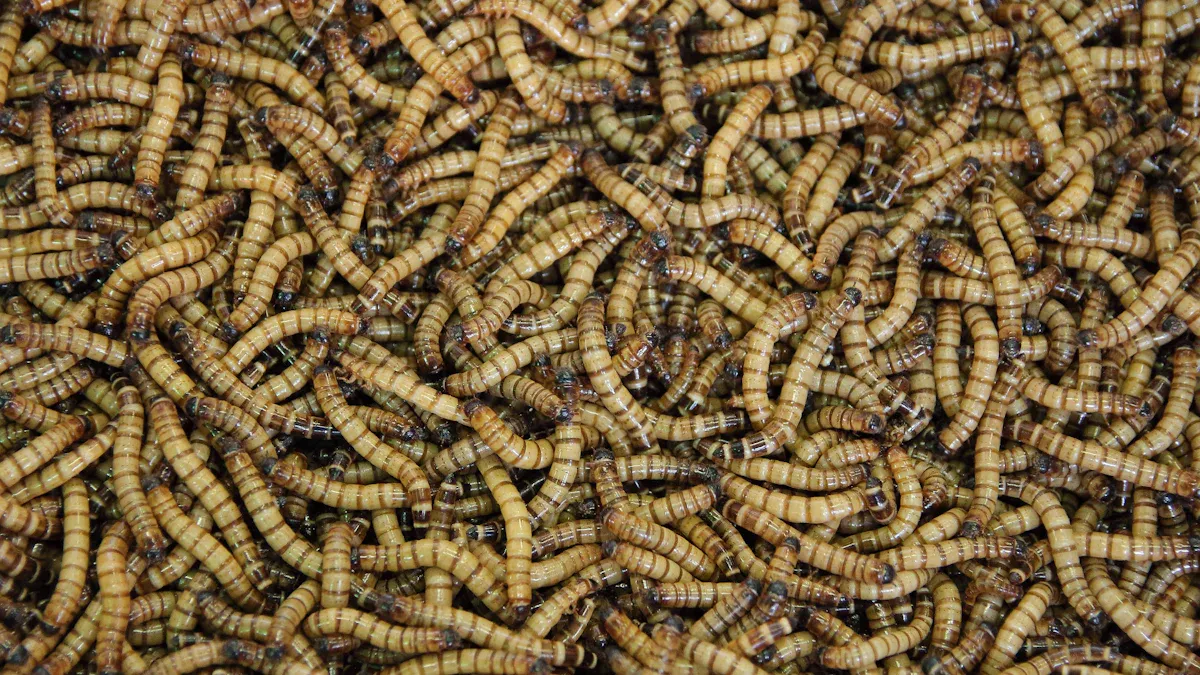
Many bird lovers see dried worms for birds as a smart way to support feathered friends. These tiny treats pack a punch with nutrients that help birds stay active and healthy. When birds munch on them, they show more energy, brighter feathers, and natural behaviors in the backyard.
Key Takeaways
- Dried worms provide birds with high protein and fat, boosting their energy, growth, and feather health.
- Feeding dried worms encourages natural foraging behaviors, keeping birds active and happy in your yard.
- Use safe, high-quality dried worms from trusted sources and offer them in small amounts during active times for best results.
Key Benefits of Dried Worms for Birds

Nutritional Value and Health Advantages
Dried worms for birds offer a powerhouse of nutrition. Many bird lovers choose them because they deliver high levels of protein and fat, which birds need for daily life. The protein content in dried mealworms can reach up to 60%, and the fat content can be as high as 47%. These numbers are even higher than what you find in many plant-based feeds. The table below shows some important nutritional facts about dried mealworms:
| Nutritional Parameter | Reported Range / Values | Notes / Comparisons |
|---|---|---|
| Feed Conversion Ratio (FCR) | 1.57 to 6.05 | Lower FCR means more efficient feed conversion |
| Efficiency of Conversion (ECI) | 16.8% to 54.4% | Mealworms show higher ECI than many other insects |
| Crude Protein (CP) | 43.3% to 60.2% | Higher than soybean meal (49.4%) |
| Crude Fat | 34.9% to 47.7% | Exceeds many other feed options |
| Ash Content | 9.73% to 13.8% | Higher than most other feeds |
| Energy Value (kcal/100g) | 539.63 to 577.44 | Delivers plenty of energy for active birds |
Bird Dried Mealworm Topping gives birds all this nutrition in a form they love. With every bite, birds get the protein and energy they need to stay strong and healthy.
Supporting Energy, Growth, and Feather Health
Birds need a lot of energy to fly, sing, and grow. Dried worms for birds help meet these needs. Studies show that freeze-dried mealworms contain about 45% protein and 33% fat. These worms also have important fatty acids like omega-3 and omega-6. When birds eat them, their bodies store more of these healthy fats. This helps birds fly longer and stay active. The extra protein supports muscle growth and keeps feathers shiny and smooth. Even though scientists did not measure growth or feather health directly, the nutrients in dried worms clearly help birds stay in top shape.
Encouraging Natural Foraging and Activity
Offering dried worms for birds does more than just feed them. It encourages birds to use their natural skills. Birds love to search for tasty treats. When people scatter dried worms in the yard or garden, birds hop, peck, and explore. This keeps them busy and happy. Products like Bird Dried Mealworm Topping attract many types of birds, such as bluebirds, chickadees, cardinals, nuthatches, woodpeckers, flycatchers, wrens, and robins. These birds enjoy the challenge of finding worms, which helps them stay alert and active.
Tip: Try placing dried worms in different spots or mixing them with other foods. This makes feeding time more fun for birds and gives them a reason to visit your yard again and again.
Which Birds Benefit Most and How to Feed Dried Worms for Birds

Bird Species Attracted to Dried Worms
Many backyard birds love the taste and nutrition of dried worms for birds. Some of the most common visitors include bluebirds, chickadees, cardinals, nuthatches, woodpeckers, flycatchers, and wrens. Robins especially appreciate this protein-rich treat. When someone adds Bird Dried Mealworm Topping to their feeder, they often see a burst of color and activity in the yard. These birds come looking for a quick snack, and they often return for more. Even birds that usually eat seeds may try dried worms if they find them in a feeder or scattered on the ground.
Tip: Try offering dried worms in a shallow dish or on a platform feeder. This makes it easy for both small and large birds to enjoy the treat.
Safe Feeding Tips and Best Practices
Bird lovers want to keep their feathered friends healthy. The safest way to feed dried worms for birds is to choose products from trusted sources. Commercially farmed worms, like those in Bird Dried Mealworm Topping, come from controlled environments. These worms are free from harmful parasites and soil contaminants. Wild or garden worms may carry bacteria or parasites that can harm birds, so it is best to avoid them.
Avian nutritionists recommend checking the nutritional content of any worm product. Earthworms, for example, contain about 11% protein and 3% fat, but dried mealworms offer even more protein and energy. Birds also benefit from the natural bacteria found on worms, which help their digestion. Commercial probiotics cannot match the complex mix of good bacteria that birds get from real worms. By choosing safe, high-quality dried worms, bird enthusiasts help their backyard visitors stay strong and healthy.
When and How to Offer Dried Worms
Timing matters when feeding birds. Many people notice that birds need extra energy during the spring and summer, when they are nesting and raising chicks. Dried worms for birds give them a boost during these busy times. Birds also enjoy dried worms in the fall and winter, when natural food is harder to find.
Researchers have found that temperature and daylight affect how quickly mealworms grow. The best time to harvest and offer dried worms is when they are at their peak nutrition. Most bird lovers do not need to worry about this, since commercial products like Bird Dried Mealworm Topping are prepared at the right time for maximum benefit.
Here are some simple ways to offer dried worms:
- Sprinkle a small handful on the ground or in a feeder.
- Mix dried worms with seeds or suet to attract more birds.
- Offer worms in the morning and late afternoon, when birds are most active.
Note: Always provide fresh water nearby. Birds need water to help digest their food, especially when eating dried treats.
Dried worms for birds give backyard flocks and wild visitors a tasty, nutritious boost. Studies show they help birds lay more eggs and stay active. Field reports suggest mealworms can support survival during tough weather. Responsible feeding lets bird lovers enjoy lively, healthy birds in their gardens.
FAQ
Can birds eat dried worms every day?
Yes! Birds can enjoy dried worms daily. Bird Dried Mealworm Topping gives them protein and energy. Just offer a small amount each day for best results.
Do dried worms attract many bird species?
Absolutely! Dried worms bring bluebirds, robins, chickadees, and more. Many colorful birds visit feeders with Bird Dried Mealworm Topping.
How should someone store dried worms?
- Keep dried worms in a cool, dry place.
- Seal the bag tightly after each use.
- This keeps them fresh and tasty for birds.


